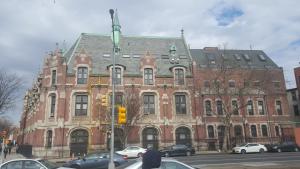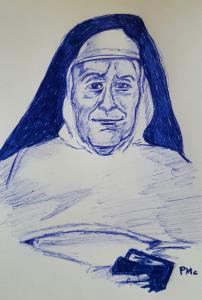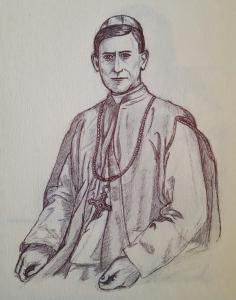![sulpiciansinunit00herb_0247[1]](https://wp-media.patheos.com/blogs/sites/224/2014/06/sulpiciansinunit00herb_02471-225x300.jpg) Founded in 1641 in France by Jean Jacques Olier, the Society of St. Sulpice (S.S.) is a community of secular priests dedicated to the formation of priests. The Sulpicians, as they are known, started the first Catholic seminary in the United States, St. Mary’s Seminary in Baltimore (still functioning). They first came to America in 1791, fleeing the persecutions of the French Revolution. They also founded the first successful preparatory seminary in the United States, St. Charles College (named for its benefactor, Charles Carroll) in Ellicott City, Maryland, in 1848.
Founded in 1641 in France by Jean Jacques Olier, the Society of St. Sulpice (S.S.) is a community of secular priests dedicated to the formation of priests. The Sulpicians, as they are known, started the first Catholic seminary in the United States, St. Mary’s Seminary in Baltimore (still functioning). They first came to America in 1791, fleeing the persecutions of the French Revolution. They also founded the first successful preparatory seminary in the United States, St. Charles College (named for its benefactor, Charles Carroll) in Ellicott City, Maryland, in 1848.
Although their numbers were small in America (rarely more than a dozen or so), the Sulpicians exercised tremendous influence in the early American Church. Many of their members, as well as their alumni, exercised key leadership roles as bishops and archbishops. Many more members of the hierarchy were strongly and positively influenced by their Sulpician formation. Their influence also extended beyond the seminary. In 1829, Father James Joubert played a key role in founding the Oblate Sisters of Providence, the first religious community for African American women.
One of the most significant figures during this period of Sulpician history was Father Louis Regis Deluol, who in 1829 was named superior of the American community. He would serve in that position for twenty years. At the time he was community treasurer while teaching theology, sacred scripture, philosophy and Hebrew to the seminarians. He proved a capable leader whose influence extended well beyond the walls of the seminary.
Born in St. Privat, France, Deluol saw firshand the worst of the French Revolution, especially its anti-religious persecutions. As a child, his family harbored a fugitive priest whose Mass the young Louis served, which one historian calls “an experience which made a profound impression.” As a young man he studied at the seminary in Viviers, where he taught philosophy to the younger students. He was ordained on December 21, 1811, the same year that Napoleon Bonaparte suppressed the Sulpicians in one of his power struggles with the Catholic Church.
It was King Louis XVIII who restored the community, which Father Deluol joined in October 1816. (Only ordained secular priests can join the Sulpicians.) Soon thereafter he sailed for America to teach theology at St. Mary’s in Baltimore. He proved a popular professor as well as an accomplished administrator. Historian Charles Herbermann writes of Deluol: “Combining great charm of manner with sound judgment, he was loved and respected by all with whom he came into contact.” In additional, he was described as a “man of unusual learning,” “a Hebrew scholar of note.”
In Baltimore, not far removed from the nation’s capitol, Father Deluol encountered some of the early republic’s leading figures. His friends included Daniel Webster and Washington Irving, who admired his learning and charm. Charles Carroll, the sole Catholic and last surviving signer of the Declaration of Independence, was a strong benefactor of the Sulpicians.
Deluol formed close relationships with his students, many of whom went on to become bishops. It was said that he “was full of sympathy with the seminarians, loved to exchange a joke with them, and did not disdain an occasional use of slang.” As head of the American Suplicians, he proved to be “a splendid executive.” Because of his many episcopal connections, He was also active in the larger affairs of the Church, participating in the American bishops’ meetings (then known as provincial councils), pushing for a national seminary and calling for the Immaculate Conception to be named patroness of the United States. He also played a key role in the merger of the Sisters of Charity with the Daughters of Charity in France.
In 1849, Father Deluol’s term ended after twenty years. He returned to France, where he taught Hebrew until his death on November 15, 1858. Many of his former students, now bishops, often visited him, including Archbishop John Hughes of New York. According to Herbermann, his death “like his life, was that of a pious Christian and a model priest.”











